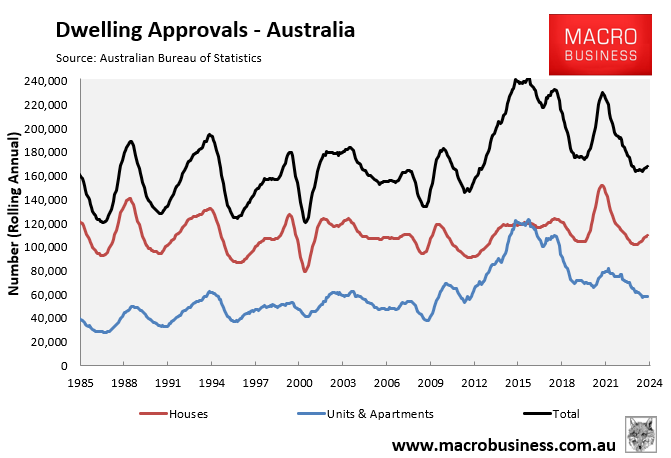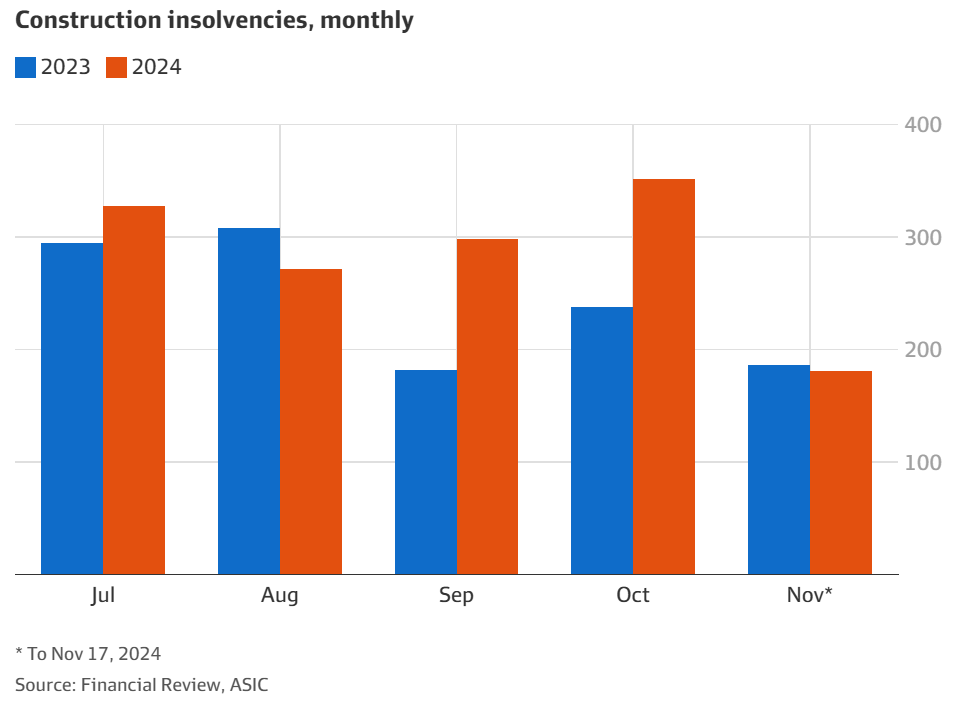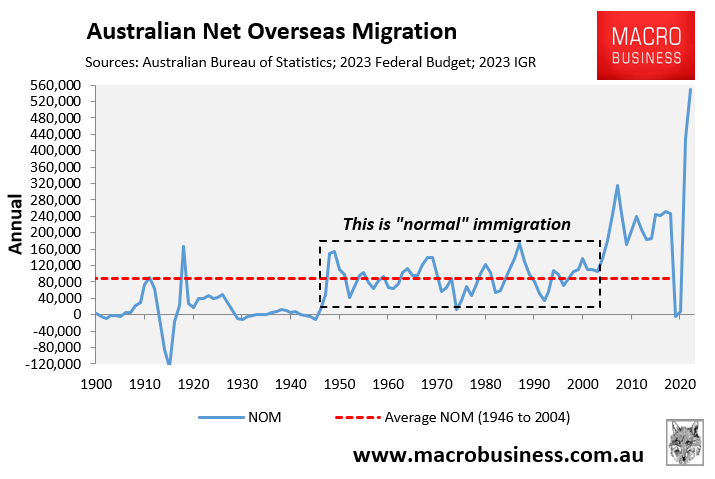There was some moderately positive news this week, with the Australian Bureau of Statistics (ABS) reporting that dwelling approvals continue to trend higher after bottoming in January 2024.
As illustrated below, both house and unit approvals have lifted and are up 4.2% and 9.8% through the year.

In October, 15,069 dwellings were approved for construction nationally, roughly 25% less than the Albanese government’s housing target, which requires 20,000 homes to be built monthly.
Annual dwelling approvals rebounded moderately to 168,166 for the year ending October 2024, 78,834 (30%) below the Albanese government’s yearly target of building 240,000 homes.

At the same time as dwelling approvals are languishing at only 168,166 annually, the Q3 national accounts showed that Australia’s population ballooned by 638,400 annually.

This indicates that there was only one approved dwelling for every 3.8 population additions. This excludes homes lost via demolition and second homes (e.g., holiday homes).
To exacerbate the situation, the failure rate of home builders remains alarmingly high.
Insolvencies in the construction sector for the financial year to date were 1431, an 18% increase from last year.

“High interest rates, inflation and labour shortages continue to impact businesses in our sector”, Master Builders Australia chief executive Denita Wawn said.
“Even though some of the issues around building materials inflation are starting to abate, we’re still seeing the flow-on effect from the pandemic. Unfortunately, this continues to ripple throughout the industry”.
Warn told Radio 4BC this week that Australia would miss its 1.2 million housing target by more than 400,000 homes.
“That is incredible to think that in this day and age, we cannot house our community”, she said. “There is something fundamentally wrong with that”.
The fundamental problem is that the federal government continues to import migrants far quicker than the nation can build homes and infrastructure.
Few of these migrants have jobs in construction, which exacerbates this issue.

Therefore, Australia’s immigration system is significantly increasing the demand for housing without increasing the supply—a recipe for disaster.
The obvious solution is to dramatically lower net overseas migration and shift the intake away from Uber drivers to tradies.

The CEO of homebuilder QHI Group, Scott Challen, said it best this week when he blamed the federal government for Australia’s housing shortage and called for much lower levels of immigration.
“We’ve got a Labor government saying that they’re committed to tackling this problem”, he said.
“This problem has been on their plate for three years now, and all they’ve done is placate the unions and exacerbate the problem even further by bringing in more migrants than we can build homes for”.
“The only solution now is a radical solution, and this is where everybody gets upset, especially the banks, especially the big players in corporate finance and stuff in Australia”.
“We need to cut migration to 50,000 a year for compassionate reasons only. We need to go two or three years of this to be able to let the country catch up”, he said.
Challen added that slashing the volume of migrants entering Australia would alleviate the demand for housing and allow the building and construction sector to catch up on existing projects.
We couldn’t agree with Challen more. The solution stares our policymakers in the face, yet they continue to ignore it.

